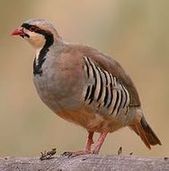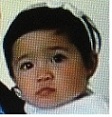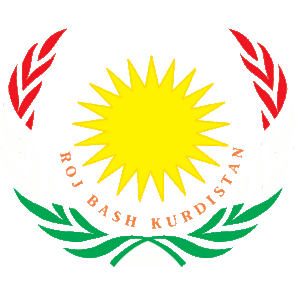what is the oldest kurdish text you know? in north, there is someone "boraboz" or "borazboz" or "porepoj" is being talked about, which is said to be lived around 330 bc, and this poem is written by him, on the gravestone of his wife:
BI HEVRE
Xwazdî ez tu hevre bin
Bi hevreherin xorînê
Wer dê bihêrin kotra bin
Bang dîn bi hevre narînê
Dwînî kotra hêra bûm
Awaz ji cir dixwînê
Fîrabîl û beyaban
Hawar ji dest evînê
Ez tu watu yek dil wîn
Hêzan cwadi wînê
Vêra pêkra hıfne wîn
well this looks a lot like kurmanci, and there is no trace of this poem in academic texts at all. i wonder if i failed to look up. does anyone know the source for this? in turkish sources, they say "this is a gravestone found by english archeologist in hewreman" anyone from hewreman knows about this? if its true, its huge.
Welcome To Roj Bash Kurdistan


oldest kurdish text?
10 posts
• Page 1 of 1
-

polatbekov - Nubar

- Posts: 30
- Joined: Tue Oct 23, 2012 10:33 pm
- Highscores: 0
- Arcade winning challenges: 0
- Has thanked: 15 times
- Been thanked: 12 times
- Nationality: Kurd
Re: oldest kurdish text?
aand the english translated made by me 
together
i wish we were together
we would eat together
wer de biherin kotra bin (not really sure, bu kotra is said to be "mountain" )
together we would sing songs.
dwini kotra hera bum (not sure)
telling (singing?) from my heart.
firabil u beyaban (not sure)
save me from hands of love.
we were one heart together,
autmun came, seperated us.
talk now, or sleep. (not sure)

together
i wish we were together
we would eat together
wer de biherin kotra bin (not really sure, bu kotra is said to be "mountain" )
together we would sing songs.
dwini kotra hera bum (not sure)
telling (singing?) from my heart.
firabil u beyaban (not sure)
save me from hands of love.
we were one heart together,
autmun came, seperated us.
talk now, or sleep. (not sure)
-

polatbekov - Nubar

- Posts: 30
- Joined: Tue Oct 23, 2012 10:33 pm
- Highscores: 0
- Arcade winning challenges: 0
- Has thanked: 15 times
- Been thanked: 12 times
- Nationality: Kurd
Re: oldest kurdish text?
I don't know, there was once an 'ancient' poem that circulated on the net which was found to be a hoax (Hurmizgan). I'm sure this is a similar case; not only would it have had far more exposure in the news, but the fact that you can make a translation so easily makes this downright unbelievable. Languages evolve quite quickly, just look at a text of 100 years ago, let alone one from 2300 years ago.
Kurdish DNA blog:
http://kurdishdna.blogspot.com/
Kurdish Musings (a great Kurdish history blog):
lepzerin.wordpress.com
http://kurdishdna.blogspot.com/
Kurdish Musings (a great Kurdish history blog):
lepzerin.wordpress.com
-

Zert - Shermin

- Posts: 208
- Joined: Sat Oct 16, 2010 10:59 pm
- Highscores: 0
- Arcade winning challenges: 0
- Has thanked: 32 times
- Been thanked: 152 times
Re: oldest kurdish text?
Zert wrote:I don't know, there was once an 'ancient' poem that circulated on the net which was found to be a hoax (Hurmizgan). I'm sure this is a similar case; not only would it have had far more exposure in the news, but the fact that you can make a translation so easily makes this downright unbelievable. Languages evolve quite quickly, just look at a text of 100 years ago, let alone one from 2300 years ago.
Yeah. I can't see it being Kurdish because if it was written that long ago, it would have been in what ever languages Kurdish ancestors spoke then. Are there any languages which can say they've been completely unchanged for over 2000 years? Farsi and Arabic if you go back even to its earliest forms is difficult to read, and this holds true for pretty much any language.
I don't think Kurdish as a formal language even existed that long ago (330 bc), the creation of modern Kurdish language received some influence from the spread of Arabic script following Islamic conquest.
-

Lepzerin - Shermin

- Posts: 59
- Joined: Wed Sep 19, 2012 1:19 am
- Highscores: 0
- Arcade winning challenges: 0
- Has thanked: 27 times
- Been thanked: 32 times
- Nationality: Kurd
Re: oldest kurdish text?
and whats the answer for the question "what is the oldest kurdish text you know"?
-

polatbekov - Nubar

- Posts: 30
- Joined: Tue Oct 23, 2012 10:33 pm
- Highscores: 0
- Arcade winning challenges: 0
- Has thanked: 15 times
- Been thanked: 12 times
- Nationality: Kurd
Re: oldest kurdish text?
'Cotra' could be for 'Cotr' which means pigion. Pigion is a loveble pet in Kurdistan and the name 'Cotr' used in romantic songs with amny meanings.
-

Londoner - Tuti

- Posts: 1987
- Joined: Tue Feb 12, 2008 8:58 am
- Highscores: 0
- Arcade winning challenges: 0
- Has thanked: 0 time
- Been thanked: 752 times
Re: oldest kurdish text?
Do you have any internet sources for this old text? I will post it on Apricity
Mezin Apo
Bilind Apo
Serok Apo
Ape me
Sirin Apo
Qehreman Apo
Rebere gele me
Bilind Apo
Serok Apo
Ape me
Sirin Apo
Qehreman Apo
Rebere gele me
-

Shere Medya - Shermin

- Posts: 107
- Joined: Tue Aug 21, 2012 8:16 pm
- Highscores: 0
- Arcade winning challenges: 0
- Has thanked: 33 times
- Been thanked: 42 times
- Nationality: Kurd by heart
Re: oldest kurdish text?
polatbekov wrote:and whats the answer for the question "what is the oldest kurdish text you know"?
I don't know, wikipedia says that the Yezidi holy book, Mishefa Reş, seems to be the oldest written in Kurdish no earlier than the 1100s. I place higher importance on cultural works like poetry, which you can find emerging in respectable numbers in 1500s onwards in the different Kurdish principalities, vassals either to the Ottoman Empire or Safavids. Problem is there were many Kurdish authors and poets, but many of them wrote in Arabic, Turkish, or Farsi because they were under the patronage of different Mirs and Sultans who wanted texts written in that language.
There's a good, lengthy exploration of that here:
http://www.kurdishacademy.org/?q=node/51
Kurdish Literature
Kurdish is heir to a rich and extensive, but now mainly oral, literature extending back into pre-Islamic times. A large portion of the written literature has been lost to over eight centuries of nomadic dislocation into and through Kurdistan, leaving behind only fragments. Although now spoken by a minority of Kurds, Gurâni is claimant to the oldest extant literary pieces in Kurdish. Pahlawâni in general, and particularly Gurâni and its dialects, once enjoyed an unusual status as the language of high culture and literature. In all dialects of Kurmânji, Gurâni now simply means "lyric poetry" or "balladry." This vernacular, along with its dialect Awrâmani/Hewrâmi, was in fact until early modern times the language of polite society and belles lettres in most of Kurdistan, irrespective of the dominant spoken local dialect. The Kurdish princely house of Ardalân (1198-1867) spoke Gurâni until its final removal. Not surprisingly, all of the oldest surviving literary pieces in Kurdish are in Pahlawâni.
Bâbâ Tâhir (ca. 1000-1060) of Hamadân is one of the very first poets in the East to write rubaiyats, the medium of Omar Khayyam's fame. Bâbâ Tâhir's rusticity and mastery of both Laki/Gurâni, Persian (and Arabic) have rendered his works unusually dear to the common people of both nations. His particular poetic meter is perhaps a legacy of the pre-Islamic poetic tradition of southeastern and central Kurdistan, or the celebrated "Pahlawiyât/Fahlawiyât," or more specific the "Awrânat" style of balladry. Many Yârisân religious works and Jilwa, the holy hymns of the Yezidi prophet Shaykh Adi, are also in this Pahlawiyât style of verse. Bâbâ Tâhir himself has now ascended to a high station in the indigenous Kurdish religion of Yârisânism as one of the avatars of the Universal Spirit.
The lyricist Parishân Dinawari (d. ca. 1395), Mustafâ Bisârâni (1642-1701), Muhammad Kandulayi (late 17th century), Khânâ Qubâdi (ca. 1700-1759), Sarhang Almâs Khân and Mirzâ Shafi' Dinawari (mid- 18th century), Shaydâ Awrâmi (1784-1852), Ahmad Beg Kumâsi (1796-1889), Muhammad Zangana Ghamnâk-i Kirkuki (early 18th century), Muhammad Wali Kirmânshâhi (d. ca. 1901) and the grand poetess, Mastura Mâh-Sharaf Khâtun Qâdiri Zand (1805-1848) are just a few of the better-known poets in Gurâni and its dialects of Awrâmâni and Laki. Of the Gurâni poet Muhammad Faqih-Tayrân (1590-1660) of the town of Makas survive many witty folk tales in his book "In the Words of the Black Horse," as also a book of Sufi verse, "The Story of Shaykh of San'ân." Faqih-Tayrân also composed in Kurmânji, and engaged Ahmad Jaziri (see below) in a lively exchange of versified correspondence in that dialect.
Nevertheless, some of the greatest works of Kurdish secular literature presently extant in toto are in the North Kurmânji dialect. Except for Ali Hariri, all other Kurmânji poets of whom we know and whose works are extant today began their careers after the beginning of the wars and deportations of the 16th century in Kurdistan.
Although works in Kurmânji are generally of recent writing, a Yezidi religious work, the Mes'haf i Resh, is in a classic form of Kurmânji (closer to Bâhdinâni than Sorâni), and could well have been written sometime in the 13th century. It is held to have been written by Shaykh Hasan (born ca. AD 1195), a nephew of Shaykh Adi ibn Musâfir, the sacred prophet of the Yezidis. If this date can be further authenticated, Mes'haf will be the oldest piece of literature in Kurmânji, predating anything else in that vernacular by hundreds of years.
Some of the earliest Kurmânji poets and lyricists whose works are extant are Ali Hariri, from the town of Harir near Rewânduz in the Hakkâri (1425-1490?); Mullâh Ahmad (1417-1494) of Hakkâri, the author of Mawlud, a collection of verse and an anthology;
Salim Salmân, who composed his romance of Yusif u Zulaykha in 1586; Shaykh Ahmad Jaziri, better known as Mullâ-i Jaziri (or Malây Jaziri, 1570-1640) of Buhtân, who is considered one of the greatest of all Kurdish poets; and Ismâ'il of Bâyazid (1654-1710), who compiled a small Kurmânji-Arabic-Persian glossary for the use of the young, entitled Gulzhen, and several poems.
The epic drama of Mem o Zin (more properly, Mami Alân o Zini Buhtân), versified in 1694 by Ahmad Khâni (1651-1707) of the Khâniyân tribe of Hakkâri whose forefathers had settled early at Bâyazid in northeastern Kurdistan, embodies a wealth of mythological and historical events in the national life of the Kurds and idealizes their national aspirations.
Mem of the ålân clan and Zin of the rival Buhtân clan are two lovers whose union is prevented by a certain Bakr of the Bakrân clan. Mem eventually dies; then, while mourning the death of her lover on his grave, Zin falls dead of grief and is duly buried next to him. Fearing for his life when his role in the tragedy is revealed, Bakr takes sanctuary between the two graves. Unimpressed, the people slay Bakr. A thorn bush soon grows out of Bakr's blood, sending its roots of malice deep into the earth between the lovers' graves, separating the two even after their death.
The heroic epic Ballad of Dem Dem is a mythologized story of the actual siege of the fortress of Dem Dem in eastern Kurdistan, defended by the Kurdish prince of Barâdost, Khâni Lap-zerrin "the Khân with the Golden Arm," against the Safavid King Abbâs I in the 17th century. The epic is alive with vivid and graphic, but mostly symbolic, descriptions of the actual battles and the heroic resistance of the defenders. The association of the Khân with the siege is chronologically problematic, but the literary value of the epic stands out on its own. The spirit of the Dem Dem readily reminds one of the personal face-offs of the honor-bound heroes of the Trojan war, and of the stubborn and desperate resistance of the defenders of Massada to the last man and woman.
Charigars or bards, travel widely to bring to their audience the wealth of hundreds of chariga, versified epics like the Dem Dem and Mem o Zin, and other popular pieces of literature.
In comparison to North Kurmânji, South Kurmânji has only lately produced its own works of literature. In fact, none is known before the 'early 19th century and the works of Mustafâ Kurdi (1809-1866), coming at least 1000 years after the earliest extant Gurâni works. The first substantial works in South Kurmânji, beginning with those of Hâji Qadir Koy'i of Koy Sanjaq in central Kurdistan (1817-1897), capitalize more on their patriotic themes than their literary value, which is at any rate hardly comparable with the works of the giants of North Kurmânji, such as Hariri, Khâni, or Jaziri. A major exception is of course Shaykh Rizâ Tâlabâni (1835-1909) whose wit, playfulness, and lampooning of those who crossed him (of which, judging by his works, there happened to be many) renders him a delight to read (Edmonds 1935).
-

Lepzerin - Shermin

- Posts: 59
- Joined: Wed Sep 19, 2012 1:19 am
- Highscores: 0
- Arcade winning challenges: 0
- Has thanked: 27 times
- Been thanked: 32 times
- Nationality: Kurd
Re: oldest kurdish text?
@lepzerin: i see mate, thanks for the answer. but according to the book "anthology of kurdish poem" written by Selim Temo in turkey, there are a couple of earlier works than baba tahire uryan. "Baluli dana" is referred by him as the oldest poet in kurdish history, according to temo, he wrote in gorani, in 8. century.
Ew watey yaran, ew watey yaran,
Eme dewaneyin ew watey yaran
Heni mengelin yek yek şaran
Ta zinde kerim ayin iran
I myself thrust Temo as a scholar, i personally know him, and know he is a "scientific truth" driven type, rather than being a "nationalism" driven type. in his book, he also mentions the poem i have written in the first post, but doesnt include it as he finds the poem either fake, or a kurdish-to kurdish translation, update.
actually, the only sources i found are in Turkish. You know, there is now elective courses of Kurdish are available in Turkey, in the coursebook, they mention this poem also, and they dont show any source for it. there only this "it was on a gravestone found by english archeologists in 1950, in hewreman" and in another source they say "it is exhibited in london museum" but, there is absolutely no english articles about the text, not with the keywords 1950, hewreman, english archeologist at least
is there anyone from hewreman you know?
Ew watey yaran, ew watey yaran,
Eme dewaneyin ew watey yaran
Heni mengelin yek yek şaran
Ta zinde kerim ayin iran
I myself thrust Temo as a scholar, i personally know him, and know he is a "scientific truth" driven type, rather than being a "nationalism" driven type. in his book, he also mentions the poem i have written in the first post, but doesnt include it as he finds the poem either fake, or a kurdish-to kurdish translation, update.
Shere Medya wrote:Do you have any internet sources for this old text? I will post it on Apricity
actually, the only sources i found are in Turkish. You know, there is now elective courses of Kurdish are available in Turkey, in the coursebook, they mention this poem also, and they dont show any source for it. there only this "it was on a gravestone found by english archeologists in 1950, in hewreman" and in another source they say "it is exhibited in london museum" but, there is absolutely no english articles about the text, not with the keywords 1950, hewreman, english archeologist at least

is there anyone from hewreman you know?
-

polatbekov - Nubar

- Posts: 30
- Joined: Tue Oct 23, 2012 10:33 pm
- Highscores: 0
- Arcade winning challenges: 0
- Has thanked: 15 times
- Been thanked: 12 times
- Nationality: Kurd
Re: oldest kurdish text?
and also, there is this "Masi sorati alphabet" being talked about:
http://tr.scribd.com/doc/31282463/En-Eski-Kurd-Alfabesi this guy, "Wisif zozani" wrote this article in turkish, and he refers ibn wahshiye (full name Ebubekir Ahmed b. Ali b. Qays b. Muxtar b. Abdulkerim b. Harşiyya b.Bedniyya b. Bernatiyya b. Alatiyya el-Kesdani) says in his book, "kurds are saying this alphabet is from their ancestor "pinoshad" and there is 30 books written in this alphabet, i translated 2 of them to arabic because i found them useful"
and he also talks about the rivalry between keldani and kurd, mainly telling that kurds are good in botany and farmery, but suck at wizardy. he says kurds learned wizardy from keldanis.
here is the alphabet : http://www.ozgur-gundem.com//common/nuc ... 243.73.jpg
http://tr.scribd.com/doc/31282463/En-Eski-Kurd-Alfabesi this guy, "Wisif zozani" wrote this article in turkish, and he refers ibn wahshiye (full name Ebubekir Ahmed b. Ali b. Qays b. Muxtar b. Abdulkerim b. Harşiyya b.Bedniyya b. Bernatiyya b. Alatiyya el-Kesdani) says in his book, "kurds are saying this alphabet is from their ancestor "pinoshad" and there is 30 books written in this alphabet, i translated 2 of them to arabic because i found them useful"
and he also talks about the rivalry between keldani and kurd, mainly telling that kurds are good in botany and farmery, but suck at wizardy. he says kurds learned wizardy from keldanis.
here is the alphabet : http://www.ozgur-gundem.com//common/nuc ... 243.73.jpg
-

polatbekov - Nubar

- Posts: 30
- Joined: Tue Oct 23, 2012 10:33 pm
- Highscores: 0
- Arcade winning challenges: 0
- Has thanked: 15 times
- Been thanked: 12 times
- Nationality: Kurd
10 posts
• Page 1 of 1
Who is online
Registered users: Bing [Bot], Google [Bot]
















